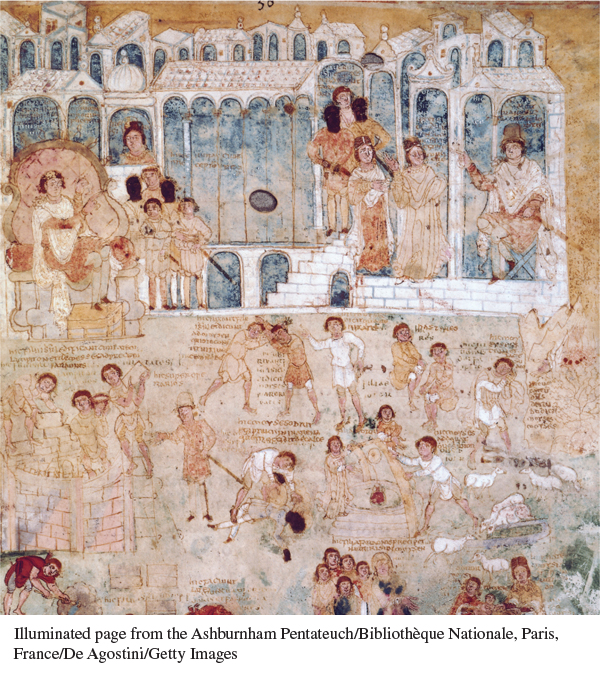A History of Western Society: Printed Page 195
A History of Western Society, Value Edition: Printed Page 186
A History of Western Society, Concise Edition: Printed Page 197
Village and Family Life

Barbarian groups usually resided in small villages, and climate and geography determined the basic patterns of how they lived off the land. Many groups lived in small settlements on the edges of clearings where they raised barley, wheat, oats, peas, and beans. Men and women tilled their fields with simple wooden plows and harvested their grains with small iron sickles. The vast majority of people’s caloric intake came from grain in some form; the kernels of grain were eaten as porridge, ground up for flour, or fermented into strong, thick beer. (See “Evaluating the Evidence 7.1: Tacitus on Germanic Society.”)
Within the villages, there were great differences in wealth and status. Free men and their families constituted the largest class. The number of cattle a man possessed indicated his wealth and determined his social status. Free men also shared in tribal warfare. Slaves acquired through warfare worked as farm laborers, herdsmen, and household servants.
Ironworking represented the most advanced craft; much of northern Europe had iron deposits, and the dense forests provided wood for charcoal, which was used to provide the clean fire needed to make iron. The typical village had an oven and smiths who produced agricultural tools and instruments of war — one-
In the first two centuries C.E. the quantity and quality of material goods increased dramatically. Goods were used locally and for gift giving, a major social custom. Gift giving conferred status on the giver, whose giving showed his higher (economic) status, cemented friendship, and placed the receiver in his debt. Goods were also traded, though commercial exchange was less important than in the Roman Empire.
Families and kin groups were the basic social units in barbarian society. Families were responsible for the debts and actions of their members and for keeping the peace in general. Barbarian law codes set strict rules of inheritance based on position in the family and often set aside a portion of land that could not be sold or given away by any family member so that the family always retained some land.
Barbarian society was patriarchal: within each household the father had authority over his wife, children, and slaves. Some wealthy and powerful men had more than one wife, a pattern that continued even after they became Christian, but polygamy was not widespread among ordinary people. Women worked alongside men in the fields and forests, and the Roman historian Tacitus reported that at times they joined men on the battlefield, urging them to fight harder. Once women were widowed, they sometimes assumed their husbands’ rights over family property and held the guardianship of their children.